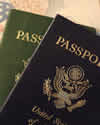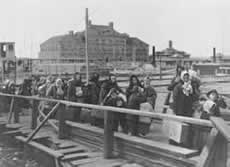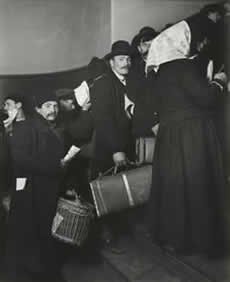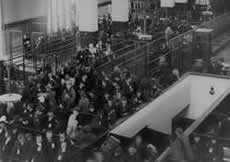A History of the European Immigration to the USA
The arrival of Christopher Columbus in the year 1492 marked the beginning of permanent settlement of European people in the New World. The first wave of European immigrants arrived in the East Coast in 1600 due to several push-pull factors present during those times. They left their homelands because of religious and political oppression, the industrial revolution, overcrowding, crop failures and other agricultural issues that lead to hunger and unemployment. The pull factors that made America desirable is the presence of economic opportunity, freedom and plentiful land.
Colonial Era (1600-1775)
The British were the largest group of European immigrants to arrive in America but not as immigrants but as part of the British Empire, of which 90% are farmers. The first English colonists that flourished were the tobacco planters of Virginia in 1607.
The Dutch arrived in 1626. They were landholders who brought in farmers. The farmers became their renters. They built rich trading posts with the Indians and major commercial centers in New Amsterdam.
The British took over New Amsterdam and renamed it New York. Not long after, German Palatines and New England Yankees began arriving. English Pilgrims and English Puritans seeking religious freedom also started arriving in the New England regions. The peak of their settlement happened between 1629 and 1641. They were the most urban and educated colonists. Many of them were skilled farmers, tradesmen and craftsmen.
They established Harvard in 1635 as training ground for their ministers. Quakers from Britain, Ulster Scots form Northern Ireland, and German protestant sects including the Palatines, settled in the middle colonies starting 1626 to 1624. Presbyterians fled Scotland and Northern Ireland due to persecution and settled at the colonial frontier between 1717 to 1775.
New Arrivals (1790-1849)
European immigrants continued to flock to America. Scandinavians were farmers, who were enticed to settle in the midwest due to cheap land price. German revolution failed Germans also migrated in masses to flee their war-stricken land and due to failed revolutions. They grew oats in Wisconsin and Texas and many of them were skilled workers. They later on became successful businessmen. Being the largest ethnic group settlers in the U.S. today, they introduced many things to the land, including hamburgers and hotdogs, the Christmas tree, kindergartens and gyms.
In 1845, the Irish - mostly Catholic - fled from persecution and starvation when their primary food crop, potato, stopped growing. They had little education and no savings they competed with free slaves for jobs. Many became factory workers and canals and railroad builders and others joined the labor movement.
Ellis Island
Between 1880 and 1921 millions of European immigrants including religious groups like the Eastern European Jews , Slavic groups like Poles, Russians and Ukrainians, and Mediterranean people like Italians, Greeks, Turks, Sicilians and Armenians poured into the United States from Eastern and Southern Europe. The wars and industrial revolution in Europe motivated them to flee. Most of them travelled by steamships in "steerage" and docked in New York City via Ellis Island. They were poor people who traveled in "steerage."
Unless an individual had criminal record or manifested overt symptoms of illness or psychological disorder, they were legally admitted to stay in America. They lived in unhealthy neighborhoods and did dangerous work. Conditions were too difficult that almost half of them returned back home.
Later Years
European immigration pattern was reversed during the Great Depression as the result of World War II, severely controlling the influx of European immigrants, specifically, refugees from Germany. Later on, restrictions against Asian nations practically closed all immigration until 1965, when new laws opened the United States for immigration once again. Despite antagonism that is frequently met by European immigrants, many still decided to settle and become United States citizens.
Read:
Who Explorered The Yellowstone National Park?
Nathaniel Turner And The Slave Revolt
Jamestown, The First Permanent Settlement In The USA
Sacagawea Showed Lewis and Clark The Way
The Vikings Came To America Long Before 1492
The History of Beer in the USA
The Wild West Period - The Golden Age Of America




